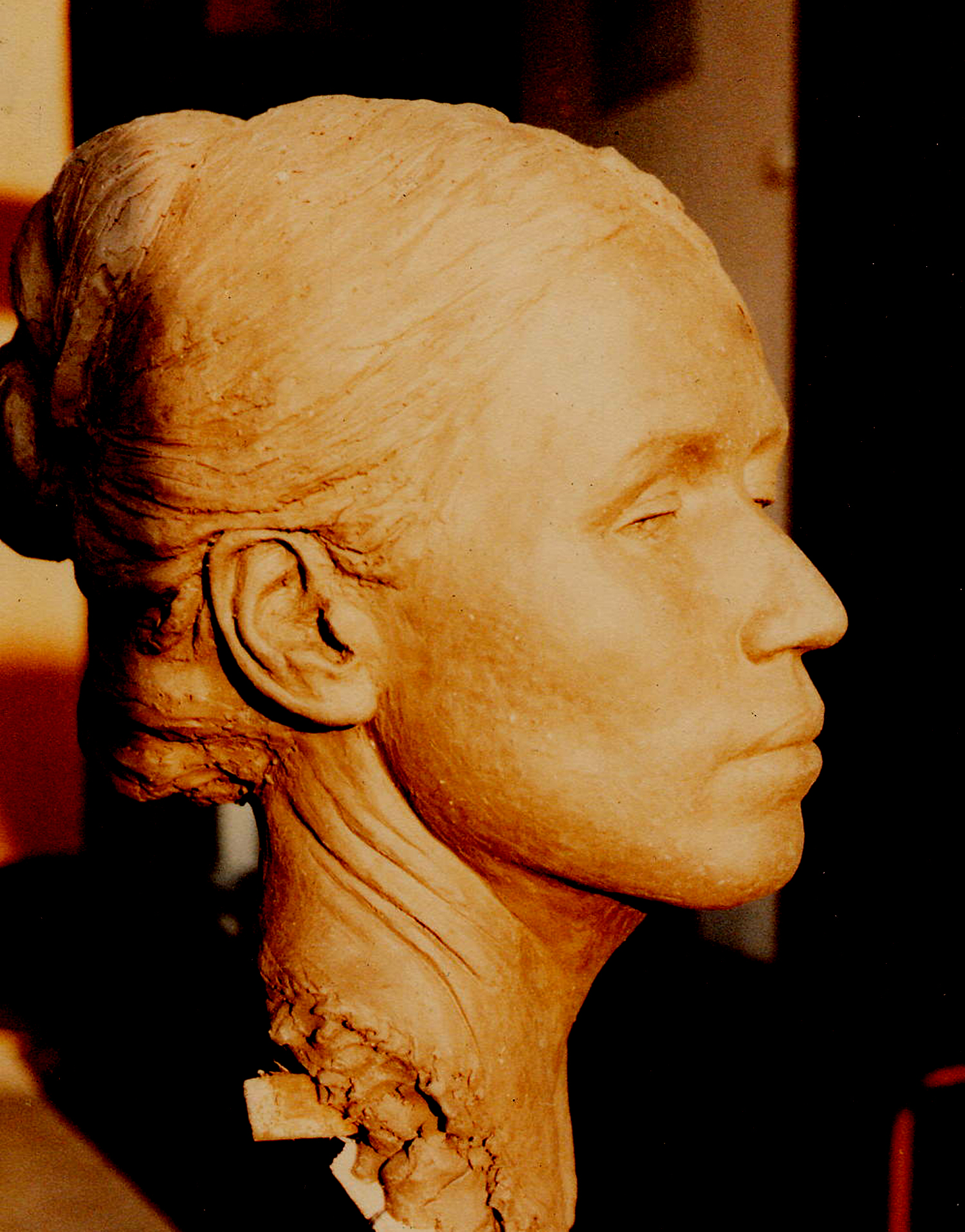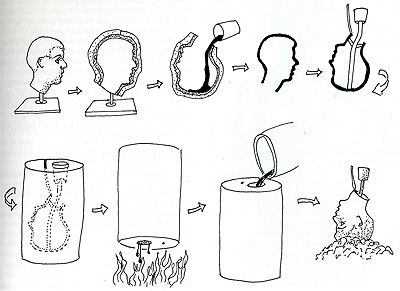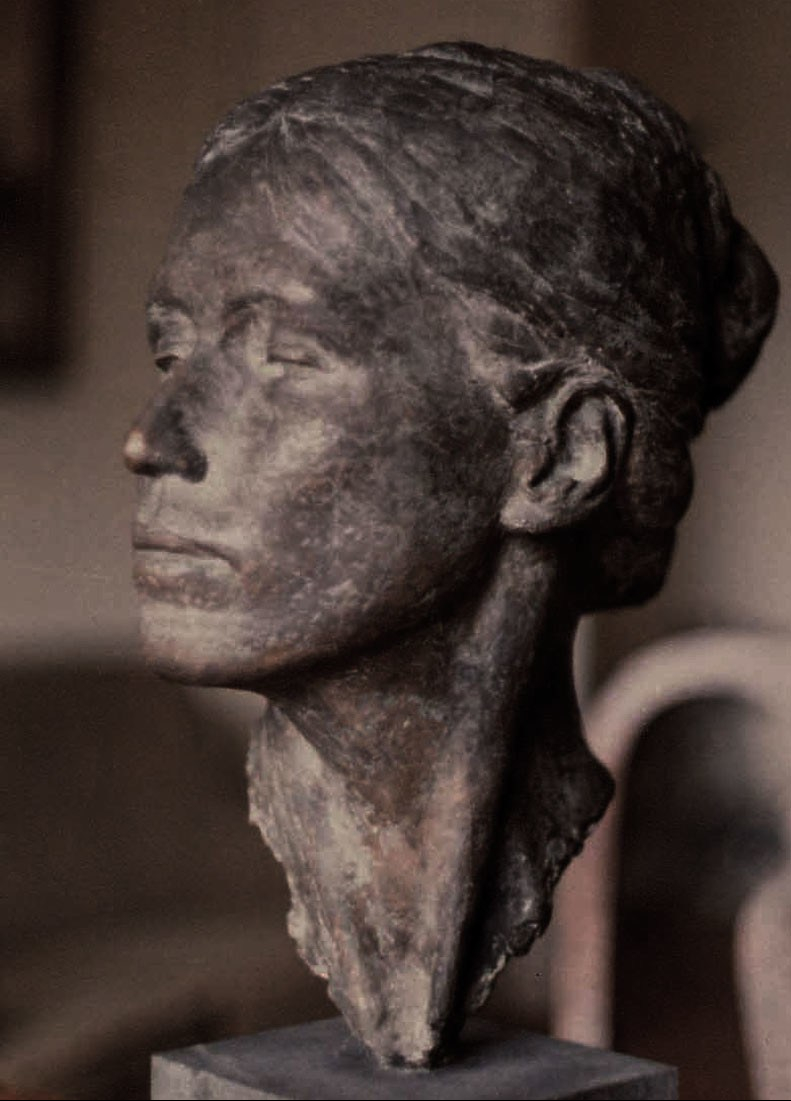
“Lynia” is my first and so far only sculpture. It is dated circa 1979, I would have been 23 years old. I sculpted it at the Free Academy Psychopolis in The Hague, Holland. It was a marvelous school, no teachers! They had models everyday, all day, and they had facilities for printmaking, sculpture, and life drawing sessions. I did this as an exploration to see if I could do it. Even today, I think “wow, this is really good look at that ear!” Even more remarkable is I was never taught figure in drawing, painting, or sculpture–my 3 years of fine art at USC, didn’t teach the figure. They just left us to our own devices and played with postmodernism.

I never became a sculptor, but I loved molding the clay realistically, and it was easy for me to conceptualize in 3d. I didn’t much care for the industry of getting it to bronze, never one for manual labor. From the clay you make a plaster cast, dig out the clay you sculpted, trusting the negative cast would not loose for form or detail. Swirl in hot wax to coat the inside of the plaster mold, fill that with more plaster, creating a wax shell that will be later transformed into bronze. Then you are halfway there. Trip to the bronze specialists, boiling metal, protection gear, steam, then let it cool, crack it open, intense clean up with metal files, and then torch on a patina. A lot of collaborative work, worry, because the original clay was destroyed, and nervous hope it will turn out. Not like doing a painting.

I think having studied all of Rembrandt’s paintings as a 12-year old and on, gave me sense of the shape, tone, and expression of a human face–I could easily feel when it was right and annoyance when something didn’t work, which I quickly changed to get back on track. It hard to explain talent, but there is definitely a feeling of delight in making the right marks and forms.

I mentioned a lot of technical stuff, which I love in a nerdy way. But the key thing is does it feel alive and how to I feel about it? I love everything about it, and looking at it now makes me feel a very full sense of tenderness. Being able to go back decades and genuinely feel satisfaction is amazing. It is like falling in love with someone, and re-experiencing that same feeling again when you see them so many years later.
Michael Newberry, Idyllwild, 2/23/2020


